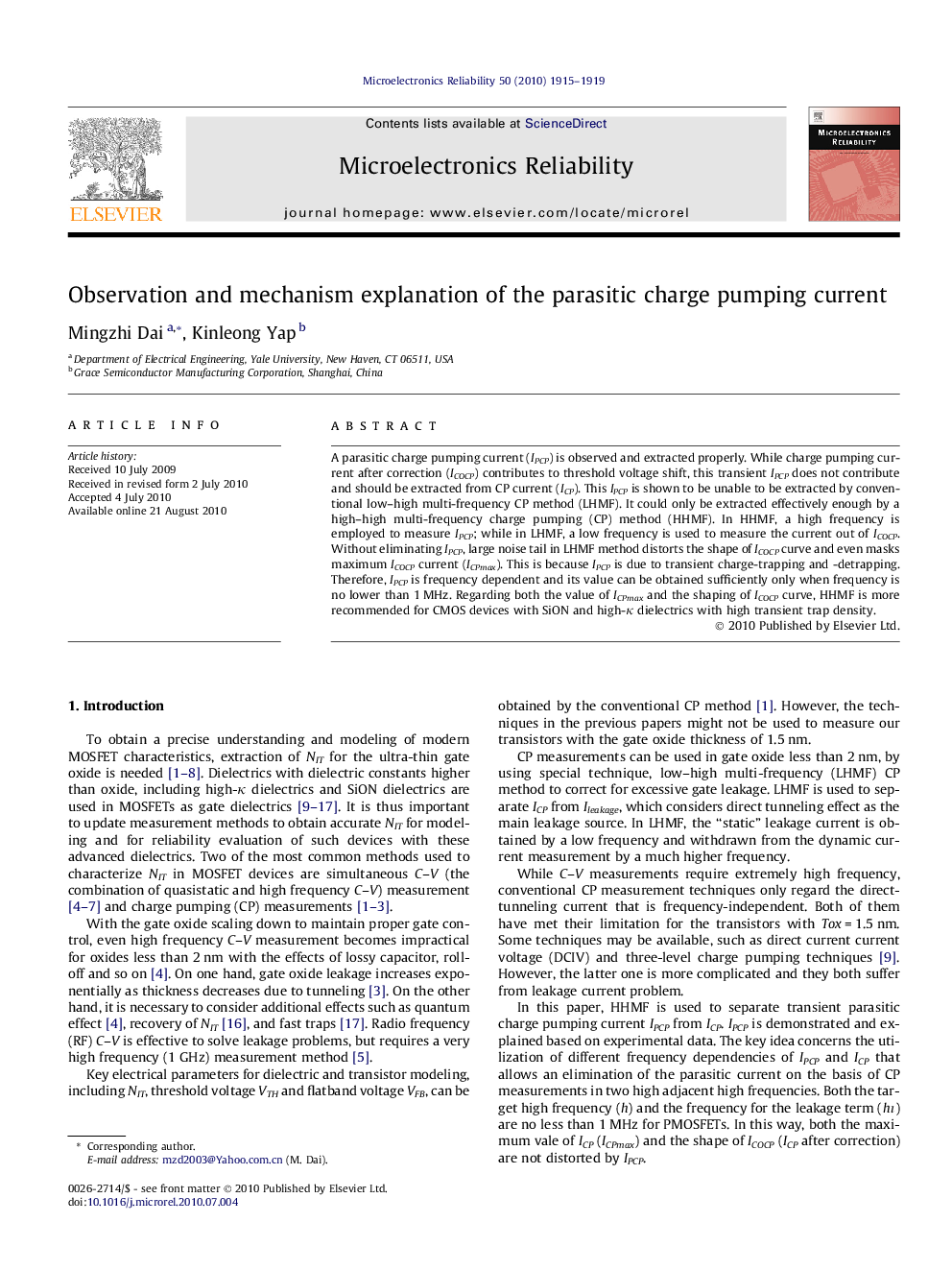| Article ID | Journal | Published Year | Pages | File Type |
|---|---|---|---|---|
| 545089 | Microelectronics Reliability | 2010 | 5 Pages |
A parasitic charge pumping current (IPCP) is observed and extracted properly. While charge pumping current after correction (ICOCP) contributes to threshold voltage shift, this transient IPCP does not contribute and should be extracted from CP current (ICP). This IPCP is shown to be unable to be extracted by conventional low–high multi-frequency CP method (LHMF). It could only be extracted effectively enough by a high–high multi-frequency charge pumping (CP) method (HHMF). In HHMF, a high frequency is employed to measure IPCP; while in LHMF, a low frequency is used to measure the current out of ICOCP. Without eliminating IPCP, large noise tail in LHMF method distorts the shape of ICOCP curve and even masks maximum ICOCP current (ICPmax). This is because IPCP is due to transient charge-trapping and -detrapping. Therefore, IPCP is frequency dependent and its value can be obtained sufficiently only when frequency is no lower than 1 MHz. Regarding both the value of ICPmax and the shaping of ICOCP curve, HHMF is more recommended for CMOS devices with SiON and high-κ dielectrics with high transient trap density.
